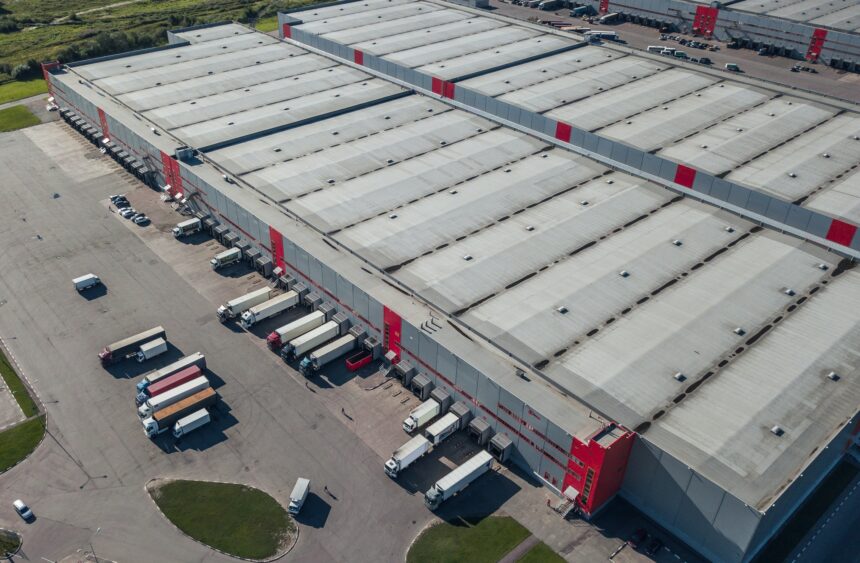Cross-border e-commerce is one of the world’s fastest-growing businesses.Cross-border EC refers to the business of buying and selling products online through foreign sites.
While developed countries such as China and the U.S. have attracted attention as nations with large cross-border EC markets, the EU’s cross-border EC market is also quite large and growing.
In cross-border e-commerce, goods must always pass through a country’s customs when they are imported or exported. Among other taxes, did you know that there is an indirect tax called VAT (value-added tax), which is widespread in the EU and Asia?
In this section, we will explain the details of VAT and the reasons for the change in VAT rules, as well as how it will affect cross-border EC in the future.
目次
What is VAT? A tax imposed on the purchase of goods and services.

What exactly is VAT, which is said to be greatly related to cross-border EC?
VAT is a tax imposed on purchases of goods and services. In other words, it is almost the same as the consumption tax in Japan.
The Japanese consumption tax is levied on the consumption of goods and services. In contrast, VAT is a tax on the value added to goods and services before they have value as goods.
In addition, taxation varies from region to region, and tax rates vary widely depending on the services and politics of the country.
The following countries are those where VAT has been introduced.
- China
- Taiwan
- United States (Oregon)
- EU
The following is a detailed explanation of the characteristics of the VAT of the above-mentioned countries.
China’s VAT
China’s VAT includes a tax called value-added tax.The value-added tax is characterized by different tax rates for different taxpayers.
In particular, the tax rate is 13% for the purchase and importation of goods, which means that many taxes will have to be paid. Currently, the value-added tax is being reduced, and it is anticipated that in the future the value-added tax will be lower.
In addition, if you are developing a cross-border e-commerce business, it is easy to start a cross-border e-commerce business in China because it is eligible for the reduced tax rate.
Taiwan VAT
In Taiwan, there is a tax called the business tax with a uniform tax rate of 5%.Unlike Japanese tax returns, business tax returns must be filed every two months.
In addition, receipts are required when filing a tax return, so if you are developing a cross-border e-commerce business in Taiwan, be sure to keep your receipts.
U.S. VAT
Each state in the U.S. has its own laws and tax rates vary from state to state. For example, while some states have a tax rate of zero, others have a tax rate of nearly 10%. Therefore, if you are planning to develop your cross-border EC business in the U.S., please check the tax rate in advance.
EU VAT
The VAT rate in the EU is basically 15% or higher. Compared to other regions, VAT in the EU is high; the EU has a VAT refund system. To get a refund, you need to bring the receipt and the declaration form on which the VAT was levied to the embassy.
Also, on the import side, products with a value of 22 euros were eligible for duty-free treatment, but last year’s new system had a major impact on cross-border e-commerce business.
So what is the new EU VAT system?
- Abolished the import VAT exemption system.
- Introduction of import one-stop system
The above features will now be explained.
Abolished the import VAT exemption system.
As mentioned earlier, no VAT was imposed on imports if the value of a single purchase of goods at the time of importation was less than 22 euros. However, as of July 2021, VAT will be mandatory even if the purchase price is less than 22 euros.
Therefore, this means that Japanese companies operating in the EU are required to pay VAT.
Introduction of import one-stop system
With the enactment of the new system, a new import one-stop system has been introduced in the EU.The import one-stop system refers to a simplified accounting system for transactions not exceeding 150 euros.
This means that if the amount is 150 euros or less, the import one-stop system eliminates the need to file a tax return.
In addition, the import one-stop system has eliminated the need to collect VAT on arrival of goods. This has made operations more efficient.
Why did the EU change the VAT rules?

The EU’s VAT rules are beneficial to both businesses and consumers because of the VAT exemption system. There are three main reasons why the EU has changed its VAT rules.
- To ensure the collection of VAT
- To simplify accounting operations
- To eliminate the need to charge consumers to pay VAT
Here is a more detailed explanation of the reasons for the above.
To ensure the collection of VAT
According to the European Commission, the purpose of ensuring the collection of VAT is to reduce the number of businesses that repeatedly evade taxes on small imports outside the EU.
It is estimated that more than 7 billion euros of tax evasion is committed annually through false VAT declarations.
To simplify accounting operations
The new VAT rules simplify accounting for businesses both within and outside the EU. In addition, the introduction of the Import One-Stop system allows VAT declarations and payments to be made online.
To eliminate the need to charge consumers to pay VAT
In the past, consumers were charged VAT upon receipt of goods, which was a major hassle for them.
However, by expanding the scope of the VAT levy, it is now possible to make VAT payments online and ahead of time. Thus, many people are no longer frequently asked to pay VAT by customs or courier service providers upon receipt of goods.
Another advantage is that it eliminates the hassle of charging not only the consumer, but also the customs and courier service providers.
Impact on future cross-border EC

The changes in the VAT system have a significant impact on cross-border EC business in Europe. There are three main effects of the changes in the VAT system.
- Increase in the number of businesses entering the EU cross-border EC
- Decrease in the number of vendors
- Decline in EU cross-border EC users
We will now discuss the above impacts in more detail.
Increase in the number of businesses entering the EU cross-border EC
The introduction of the import one-stop system in the EU has eliminated the need for tax accounting. This makes it easier to enter the EU cross-border e-commerce market and encourages many businesses to base their operations in the EU.
However, it is important to understand that the increase in the number of businesses means that competition for cross-border EC in the EU will increase.
Decrease in the number of vendors
The elimination of VAT exemptions will make tax evasion more difficult. As a result, it is expected that the number of unscrupulous businesses that do not declare and pay VAT will decrease.
VAT is also levied on vendors located outside the EU, so they can do business on an equal foot ing.
Decline in EU cross-border EC users
Since VAT is a tax imposed on consumers, it is expected that many will stop using cross-border EC if the VAT exemption system is abolished. In particular, VAT rates in the EU are high, with rates of 15% or more imposed.
In order to prevent the decline of cross-border EC users within the EU, businesses need to make various efforts.
summary
So far, we have given you a detailed overview of VAT and the reasons why the EU has enacted new VAT rules.
Cross-border e-commerce in the EU has become widespread and is one of the largest markets in the world. Businesses should strive to create websites that make people want to buy their products even if they have to pay VAT.
In addition to the EU, cross-border EC business is also becoming popular in various other countries. If you believe that this new regulation will have a negative impact on your company, you should consider withdrawing from the EU cross-border EC market.
Understanding VAT is a very important part of your future cross-border business development, and understanding the new VAT system will help you develop your cross-border e-commerce business in the EU to your advantage.
















